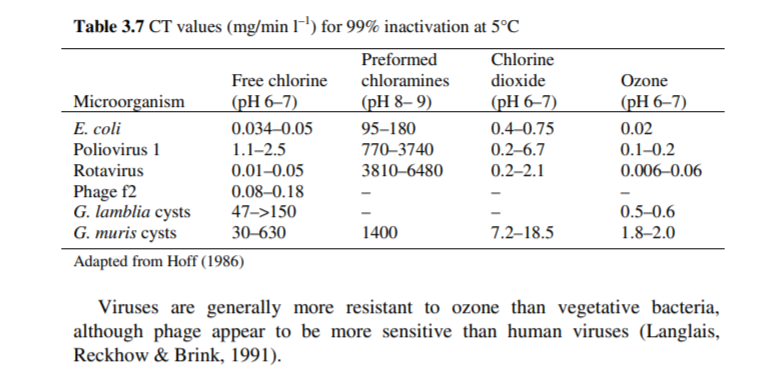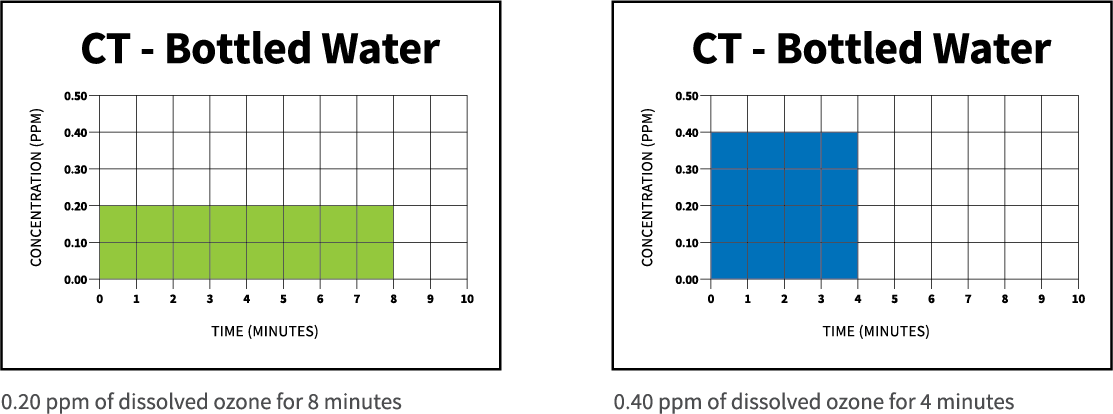This is Anthony Thompson, chief editor and the founder of this site, Tinyhousegarage. I'm a home architect. Basically, I've created this site to help people...Read more
When it comes to keeping water safe for consumption, proper disinfection is essential. Ozone is often used for water disinfection due to its effectiveness and lack of residuals. A key factor in successful water disinfection is the amount of ozone concentration in the water.
This article will discuss the importance of proper ozone concentration when disinfecting water and provide insight into the ideal range of ozone concentration required to ensure maximum water safety. It will also touch upon the advantages and disadvantages of using ozone for water disinfection, as well as the potential risks of using too much ozone. By the end of this article, you will have a better understanding of how much ozone concentration is needed to effectively disinfect water.
The amount of ozone required to disinfect water will vary depending on the type of water and the amount of contamination present. Generally, the ozone concentration should be between 0.2 and 0.4 parts per million (ppm). Ozone concentrations above 0.4 ppm can be toxic to humans and should not be used.

What is Ozone?
Ozone (O3) is a powerful oxidant and disinfectant that is used in water treatment. It is a naturally occurring gas that is formed when oxygen molecules are exposed to ultraviolet (UV) light. Ozone is highly reactive, meaning that it can break down organic contaminants in water, such as bacteria, viruses, and other microorganisms. Ozone also has the ability to destroy synthetic organic compounds, such as pesticides and industrial chemicals.
How Much Concentration of Ozone is Required to Disinfect Water?
The amount of ozone required to disinfect water depends on the type of contaminants present and the desired level of disinfection. Generally, the higher the concentration of ozone, the more effective it is at disinfecting water. The US Environmental Protection Agency (EPA) recommends a concentration of 0.2–2 mg/L for drinking water disinfection. This concentration is typically achieved by passing ozone-enriched air through the water.
The Impact of pH Level on Ozone Concentration
The pH level of the water can have an impact on the concentration of ozone needed to disinfect the water. Generally, the higher the pH level, the higher the concentration of ozone needed to achieve a desired effect. For example, the EPA recommends a concentration of 0.6 mg/L for a pH level of 8.0, while a concentration of 0.4 mg/L is recommended for a pH level of 6.5.
The pH level also affects the stability of ozone in the water. As the pH level increases, the ozone becomes less stable and breaks down more quickly. This means that a higher concentration of ozone may be needed to achieve the same level of disinfection.
The Impact of Temperature on Ozone Concentration
The temperature of the water can also have an impact on the concentration of ozone needed to disinfect the water. Generally, the higher the temperature, the higher the concentration of ozone needed to achieve a desired effect. For example, the EPA recommends a concentration of 0.6 mg/L for a temperature of 15°C (60°F), while a concentration of 0.8 mg/L is recommended for a temperature of 25°C (77°F).
In addition, the temperature affects the stability of ozone in the water. As the temperature increases, the ozone becomes less stable and breaks down more quickly. This means that a higher concentration of ozone may be needed to achieve the same level of disinfection.
Frequently Asked Questions
Here you will find answers to questions frequently asked about the concentration of ozone required to disinfect water.
What is Ozone?
Ozone is a molecule made up of three oxygen atoms. It is formed naturally in the atmosphere, where it acts as a shield, protecting us from the sun’s ultraviolet rays. Ozone can also be generated artificially, and is used for a variety of industrial and domestic applications.
How is Ozone Used to Disinfect Water?
Ozone is a powerful oxidant and disinfectant, and is widely used to purify drinking water. Ozone can kill bacteria, viruses, and other contaminants, and can be used to treat water in a variety of ways. Ozone can be used to treat water directly by adding it to the water, or it can be used to treat the water indirectly, by adding it to the air in a room where the water is stored.
What Concentration of Ozone is Required to Disinfect Water?
The concentration of ozone required to disinfect water depends on several factors, including the type of water being treated, the type of contaminants present, and the desired outcome. Generally, a concentration of between 0.2 and 1.0 parts per million (ppm) is sufficient to kill most bacteria and viruses. Higher concentrations may be required to treat certain water sources, such as water from a lake or river.
How Long Does Ozone Need to be in Contact with Water to Disinfect?
The amount of time needed for ozone to disinfect water depends on the concentration of ozone used and the type of water being treated. Generally, ozone needs to be in contact with water for at least 10 minutes to achieve effective disinfection. Ozone is also a highly reactive substance, so it breaks down quickly and needs to be replenished regularly.
What Are the Advantages of Using Ozone to Disinfect Water?
Ozone is a powerful disinfectant, and is effective at killing bacteria and viruses. Ozone is also a natural substance, so it can be used without the risk of introducing hazardous chemicals into the environment. Additionally, ozone doesn’t leave any harmful residues in the water, so it is safe to drink. Ozone is also easy to use and requires no special equipment, making it ideal for many applications.

In conclusion, the amount of ozone concentration required to disinfect water depends on the type of pollution present in the water. Generally, the ozone concentration must be between 0.2-0.4 ppm in order to disinfect water effectively. Ozone is a powerful oxidant and disinfectant that is capable of destroying microorganisms and inactivating viruses and bacteria. The use of ozone to disinfect water is cost-effective and efficient, and is quickly becoming a popular choice for water treatment. Ozone is also environmentally-friendly, as it does not produce any hazardous byproducts or create any health risks. Therefore, ozone is an ideal choice for water disinfection.

This is Anthony Thompson, chief editor and the founder of this site, Tinyhousegarage. I'm a home architect. Basically, I've created this site to help people build tiny houses with a limited budget and land space or people who are homeless. As a home architect, I became very disheartened when I saw homeless people around me, which influenced me to create this site to help people build beautiful tiny houses.
More Posts
